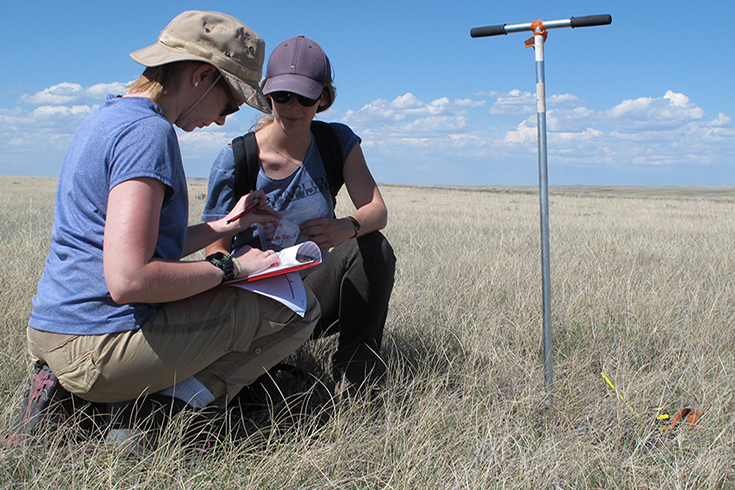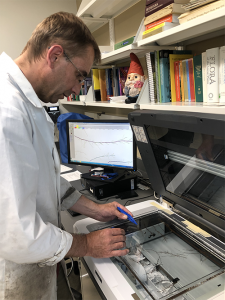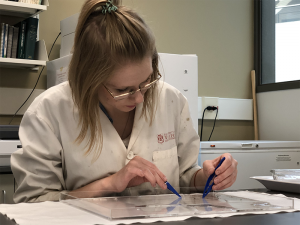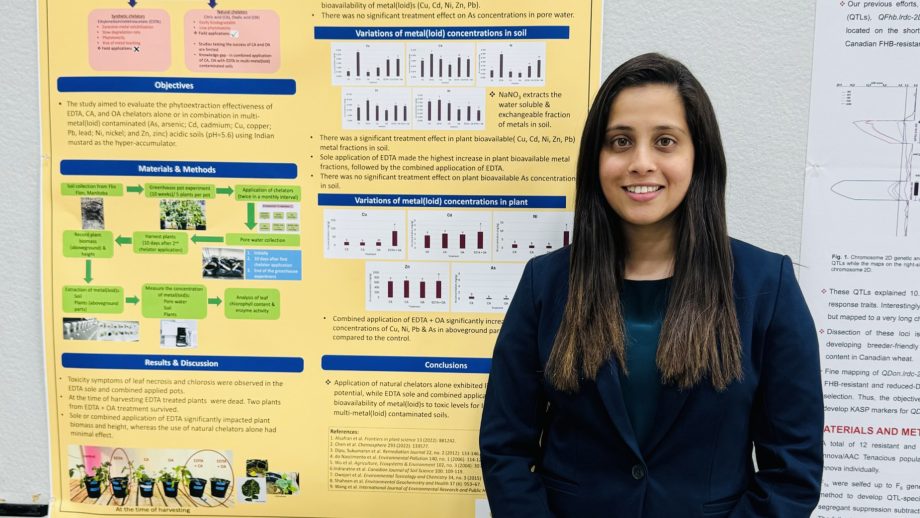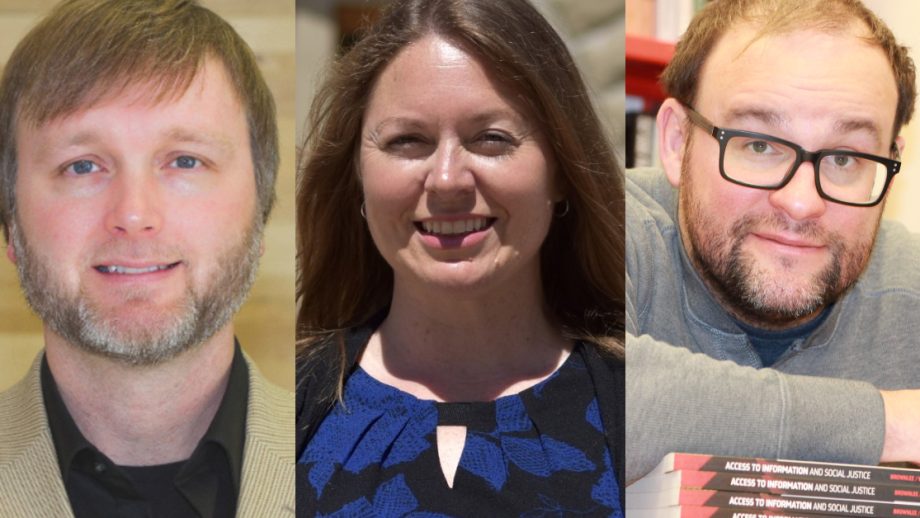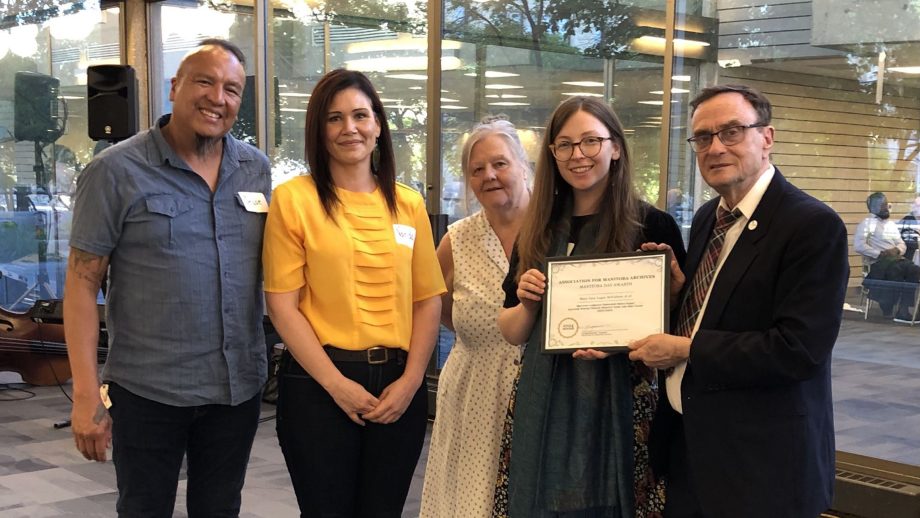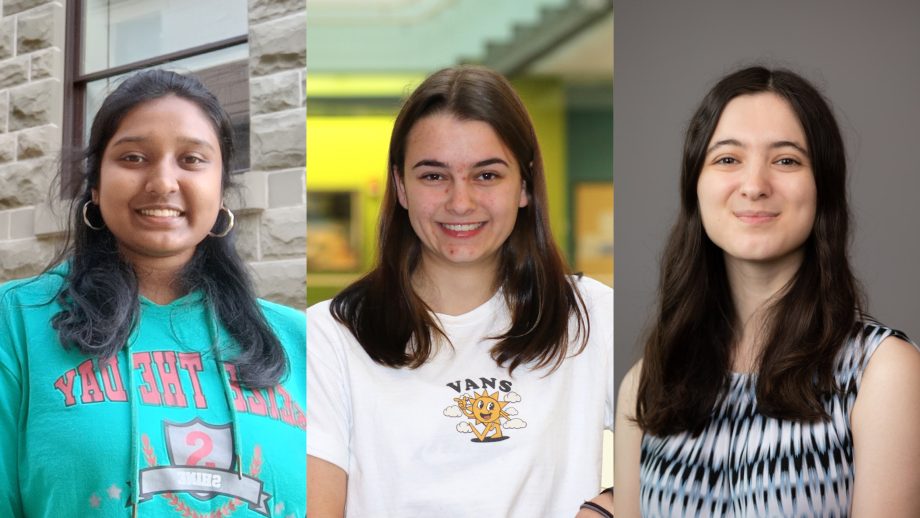The University of Winnipeg has a research team assessing the success of grassland restoration in the Canadian Prairies.
Assistant professor Rafael Otfinowski, Department of Biology, and his research assistant and UWinnipeg alumna, Vicky Coffey, have been working with Parks Canada to relate the above- and below-ground assembly of grassland ecosystems and help refine how restoration success is measured.
“What we’re interested in bringing to restoration ecology is measuring functions of an ecosystem to see if we can achieve an equivalent function without exactly the same species in place,” Otfinowski explained. “So if there are 130 plants in an undisturbed native prairie, for example, we want to know if we could achieve the same functions with a smaller number of plants — that’s the challenge.”
Understanding the function of grassland ecosystems is also valuable in their sustainable use and management of invasive plants.
In collaboration with Manitoba Beef and Forage Initiatives Inc. and Manitoba Agriculture, the team is also working to measure how the intensity and timing of grazing effects plant diversity, root systems, and soil food webs.
One finding the team has made is the diversity and structure of plants above ground is very closely matched to what’s in the soil. That’s why they’ve been using soil nematodes, which are little worms up to a millimetre in size, to look at soil health.
To truly understand the grasslands, you have to look beyond what the eye can see — approximately 80 per cent of biomass in grasslands is the soil.
“That means if you are just looking above ground, you only understand 20 per cent of what’s actually going on,” Otfinowski said. “To understand how prairies work, you need to get into the soil.”
Besides the field work itself, Otfinowski said the best part has been working with Coffey, who was originally a master’s student when she first entered in on the research.
After graduating with a Bachelor of Science in biochemistry, Coffey took Otfinowski’s field course on the Flora of Manitoba “for fun.”
“I didn’t know a lot about ecology, but Rafael told me that he had a project in Riding Mountain (National Park),” she explained. “It was restoration, which is interesting and inspiring. I started in 2016 and it’s been a great experience that continues today.”
Otfinowski said Coffey’s addition to the research has been extremely important, because her background in biochemistry brings a perspective that’s different from biologists.
“The coolest thing is learning through the questions students bring to research and it really opens your eyes,” he said. “Vicky’s undergraduate degree is in biochemistry, so it’s something that really complements what we do in the lab.”
During their more than three years working together, the team has travelled to Kansas, Czech Republic, Germany, Austria, and Oklahoma to expand their knowledge and establish a global network of researchers and collaborators.
Coffey finished her master’s in 2018, but was brought back on as a research assistant. She said this opportunity is one that wouldn’t be possible at a university other than UWinnipeg.
Recently, another undergraduate has joined Otfinowski’s team. Fourth-year student Ryan Nykvist, who’s pursuing a double major in biology and chemistry, is also collaborating with the team and excited to be involved in research on campus.
“I have to give credit to UWinnipeg and my colleagues in biology and other departments for supporting me and my students,” Otfinowski said. “These opportunities for researchers starting out don’t happen everywhere, and I really appreciate it.”

